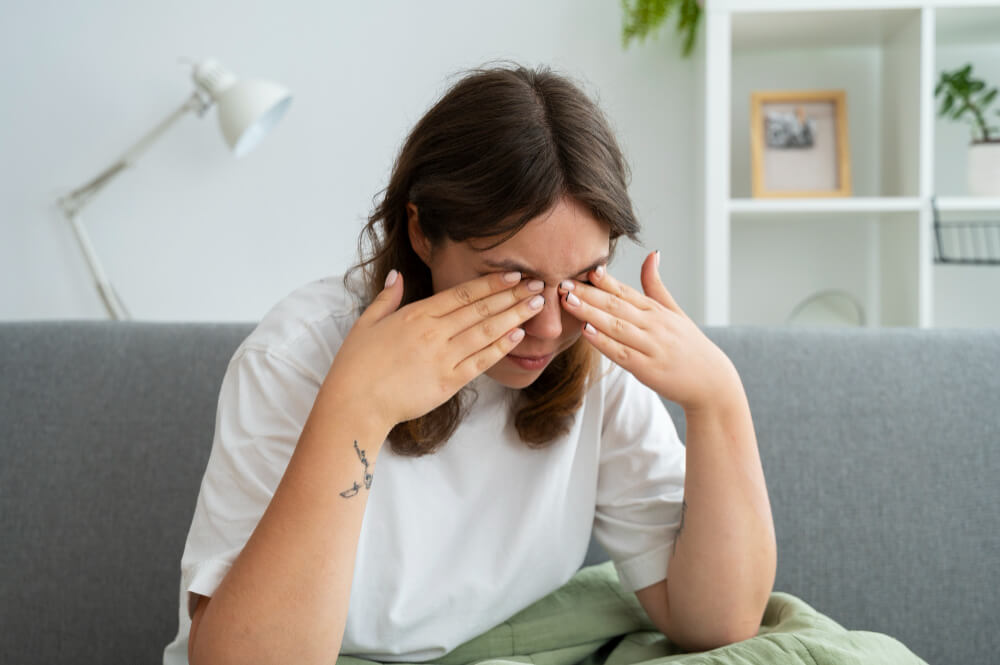Blepharitis and Eye Infections: Understanding the Difference and Finding Relief
Ever woken up with your eyes feeling gritty, itchy, and red? While these symptoms can be caused by various factors, two common culprits are blepharitis and eye infections. While they share some similarities, understanding the key differences is crucial for seeking appropriate treatment and achieving lasting relief.
This comprehensive guide dives into the world of blepharitis and eye infections, providing you with the knowledge you need to navigate these conditions effectively.

Blepharitis 101: What You Need to Know
Blepharitis, meaning “inflammation of the eyelids,” is a chronic condition affecting the edges of your eyelids. It occurs when the tiny oil glands near the base of your eyelashes become clogged or inflamed. These glands are crucial for producing oil (meibum) that keeps your tears stable and prevents them from evaporating too quickly. When they malfunction, it disrupts the tear film, leading to various uncomfortable symptoms.
Types of Blepharitis
There are two main types of blepharitis:
- Anterior blepharitis: This affects the front part of your eyelid, primarily involving the skin near the base of your eyelashes. It’s often associated with bacterial overgrowth and skin conditions like seborrheic dermatitis.
- Posterior blepharitis: This affects the meibomian glands located deeper within your eyelid. It’s typically linked to dysfunction or inflammation of these glands, leading to issues with oil production.
Symptoms of Blepharitis
Common symptoms of blepharitis include:
- Red, itchy, and burning eyes
- Feeling like something is stuck in your eyes
- Crusty or flaky eyelids, especially upon waking up
- Increased tear production or watery eyes
- Blurred vision (temporary)
- Sensitivity to light
Causes of Blepharitis

Several factors can contribute to blepharitis, including:
- Bacterial overgrowth: Bacteria on the eyelids can irritate and inflame the delicate skin and glands.
- Demodex mites: Microscopic mites naturally live on eyelashes and can sometimes contribute to inflammation, particularly in posterior blepharitis.
- Skin conditions: Seborrheic dermatitis (scaly, red patches on the scalp and eyebrows) and rosacea (facial redness and bumps) can be associated with blepharitis.
- Dry eye: This condition can worsen blepharitis and vice versa.
- Allergies: Allergies to eye makeup, dust mites, or other irritants can trigger blepharitis symptoms.
- Blepharitis risk factors: Age (more common in adults over 50), certain medications, and environmental factors may increase your risk.
Differentiating Blepharitis from Eye Infections
While blepharitis and eye infections share some symptoms like redness and irritation, they have key differences. Here’s how to distinguish them:
Blepharitis:
- Gradual onset: Symptoms usually develop slowly over time.
- Chronic condition: Requires ongoing management to control symptoms.
- Bilateral: Usually affects both eyes.
- No discharge: No pus or green/yellow discharge from the eyes.
Eye Infections:
- Sudden onset: Symptoms appear rapidly, often overnight.
- Acute condition: May resolve with proper treatment within days or weeks.
- Unilateral or bilateral: Can affect one or both eyes.
- Discharge: May present with pus or green/yellow discharge from the eyes.
Additionally:
- While blepharitis can sometimes cause blurred vision, it typically doesn’t affect your overall vision significantly. Eye infections, depending on the severity, may cause more noticeable vision impairment.
- Blepharitis usually doesn’t cause pain, while eye infections can be accompanied by eye pain and discomfort.
- If you’re unsure whether you have blepharitis or an eye infection, it’s crucial to consult an eye doctor (ophthalmologist) for a proper diagnosis and treatment plan.
Treatment Options for Blepharitis
While blepharitis is a chronic condition, there are effective treatment strategies to manage symptoms and improve your overall eye comfort. Here are some key approaches:
Home Care for Blepharitis
- Warm compresses: Apply warm compresses to your eyelids for 10-15 minutes twice daily. This helps loosen the clogged oil glands and soften crusting.
- Lid hygiene: Gently clean your eyelids with a diluted baby shampoo solution or commercially available eyelid wipes. Follow specific instructions to avoid irritating your eyes.
- Lid massage: After applying warm compresses, gently massage your eyelids to express the oil from the meibomian glands.
